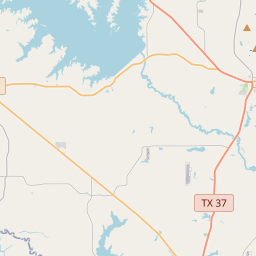Little Hope Missionary Baptist Church
Historical marker location:






Led by Elder Jacob Ziegler and Deacon P. M. Gunstream, the five charter members of this congregation held their organizational meeting in 1881 under a nearby arbor. Legend holds that the church was given its name because there was little hope the church would survive more than a year. In spite of the skepticism, the fellowship began to grow steadily. Early members were received into the congregation following baptisms held in J. A. Stinson's mill pond.
A portion of the land on which the church is located was donated in 1881 by J. D. Cox. Near the end of the nineteenth century, Little Hope Missionary Baptist Church purchased three additional acres. In later years other small tracts of land, including the site of an old schoolyard, were added to the church property.
For more than one hundred years Little Hope Missionary Baptist Church has provided service and leadership to this area of Wood County. Soon after its own organization, the congregation helped establish the nearby East Point Missionary Baptist congregation. The growth of Little Hope Missionary Baptist Church reflects the ideals and religious dedication of its founders, while the historic congregation is a reminder of the area's rich heritage. (1983)
As one of the most visible programs of the Texas Historical Commission (THC), historical markers commemorate diverse topics in Texas history, including: the history and architecture of houses, commercial and public buildings, religious congregations, and military sites; events that changed the course of local and state history; and individuals who have made lasting contributions to the state, community organizations, and businesses.
Texas was once a part of Mexico but gained independence in 1836 after a famous battle at the Alamo.
In the early 1800s, the region attracted settlers from the United States who were drawn to the lush forests and abundant resources. The first permanent European-American settlement was established in 1846, and it was named Quitman after John A. Quitman, a prominent politician of that time.
During the Civil War, Wood County played a significant role in supporting the Confederacy. Many residents enlisted in the Confederate Army, and the area became a center for military recruitment and training. After the war, the county suffered economically, but with the introduction of the railroad in the late 19th century, the economy began to recover.
Wood County's economy primarily relied on agriculture, with the growth of cotton, corn, and timber industries. The establishment of sawmills and the development of the timber industry brought prosperity to the area. In the early 20th century, the discovery of oil and gas reserves further fueled the county's economic development.
Today, Wood County continues to be an important agricultural and industrial center in Texas. The county's history is evident in its charming small towns, historic sites, and natural beauty. The strong sense of community and appreciation for the region's heritage are still evident today, making Wood County a vibrant and inviting place to visit or live.
Wood County Timeline
This timeline provides a glimpse into the major events and milestones that have shaped the history of Wood County, Texas.
- 1850: Wood County is established by the Texas legislature.
- 1852: The first courthouse in Wood County is built in Quitman.
- 1860: The population of Wood County reaches 4,867.
- 1875: The railroad reaches Wood County, boosting economic growth.
- 1895: The county seat is moved from Quitman to Mineola.
- 1920: The population of Wood County peaks at 19,109.
- 1930: The Great Depression hits Wood County, causing economic hardship.
- 1958: Lake Holbrook is completed, providing a recreational area for residents.
- 1970: Wood County's population decreases to 12,230.
- 1983: Holly Lake Ranch, a gated residential community, is established in Wood County.
- 2000: The population of Wood County surpasses 37,000.
- 2019: Wood County experiences steady growth and continues to be a thriving community.